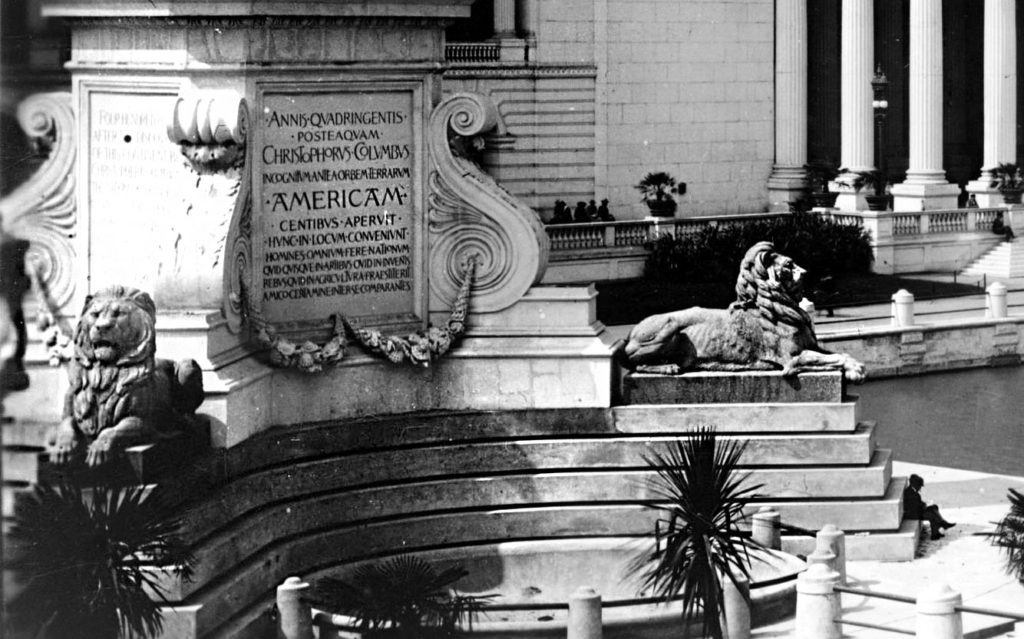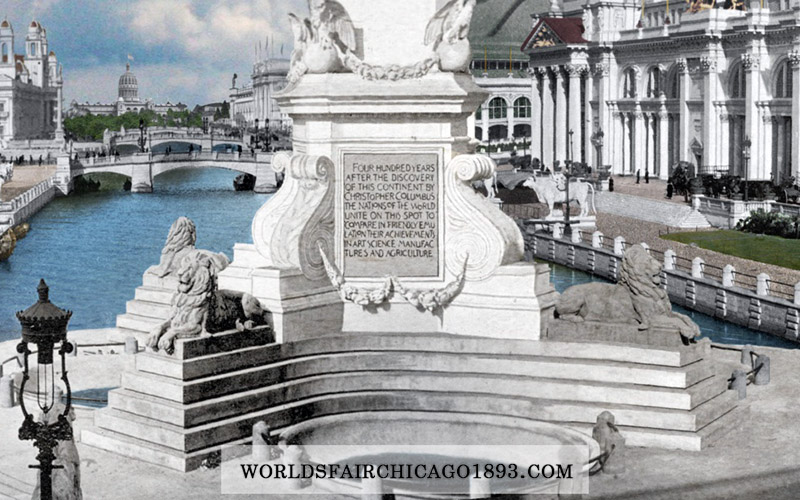The month of March, the saying goes, comes “in like a lion, out like a lamb.”
Lions—both real and plaster—could be found at several locations around the grounds of the World’s Columbian Exposition of 1893. One example is Lions by German sculptor M. Arthur Waagen. This set of four lion sculptures adorned the base of the obelisk, which stood in the center of the Colonnade in the South Canal, between Machinery Hall and the Agricultural Building.
The Chicago Daily Tribune (“By Rush and Chisel: Sculptors and Painters Who Have Decorated the Fair” November 27, 1892) described the animal sculpture this way:
“The wild look characteristic of Kemy’s {sic} work is absent, but the heroic is well delineated … The attitude suggests power in repose. A man standing beside this figure scarcely chins the top of the pedestal. To get to the back of the monarch would be a journey for a child.”
Shown below is a photograph of Lions. A man seated below the noble beast conveys the scale.

Lions by M. A. Waagen. [Image from the Library of Congress.]

